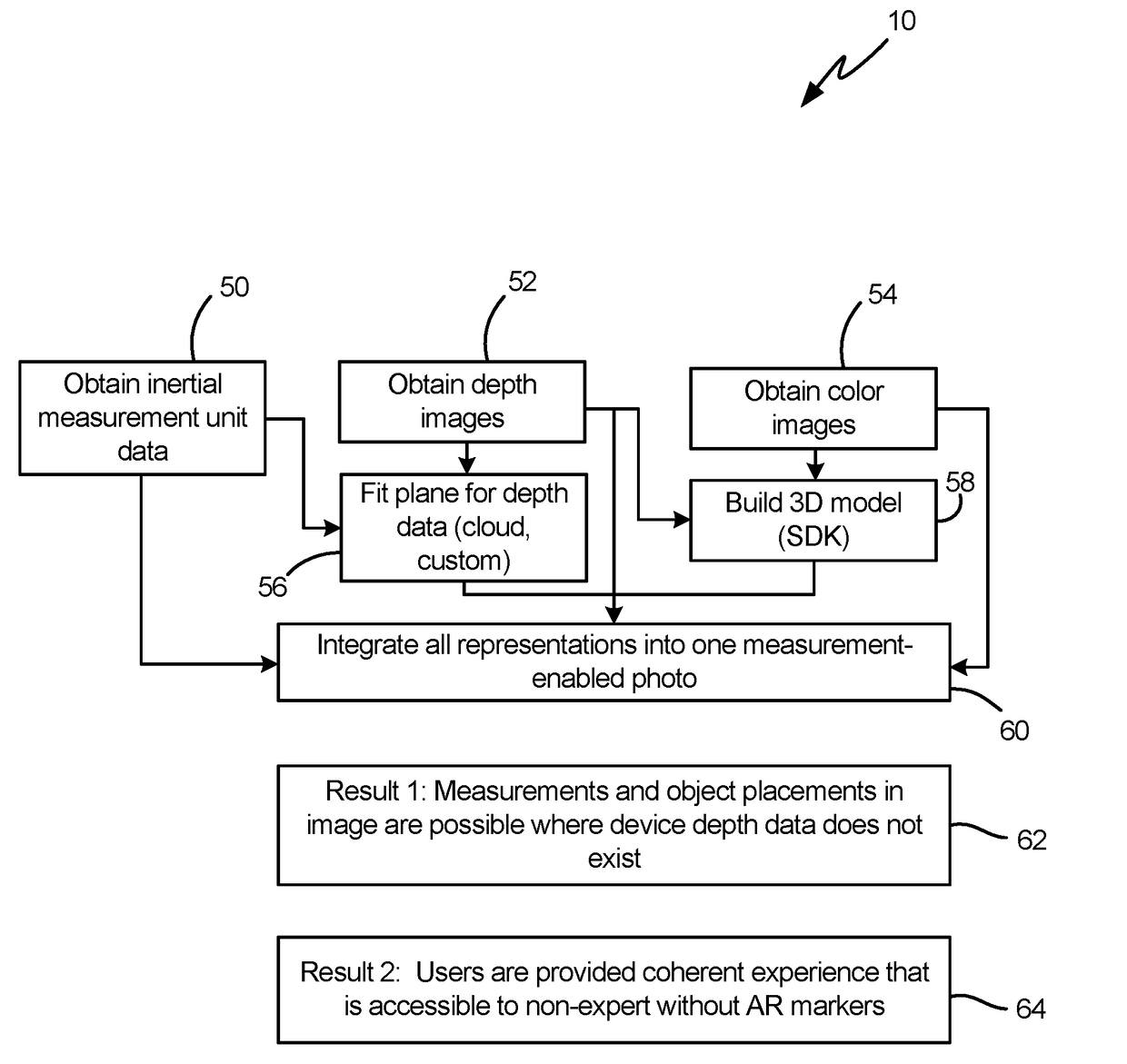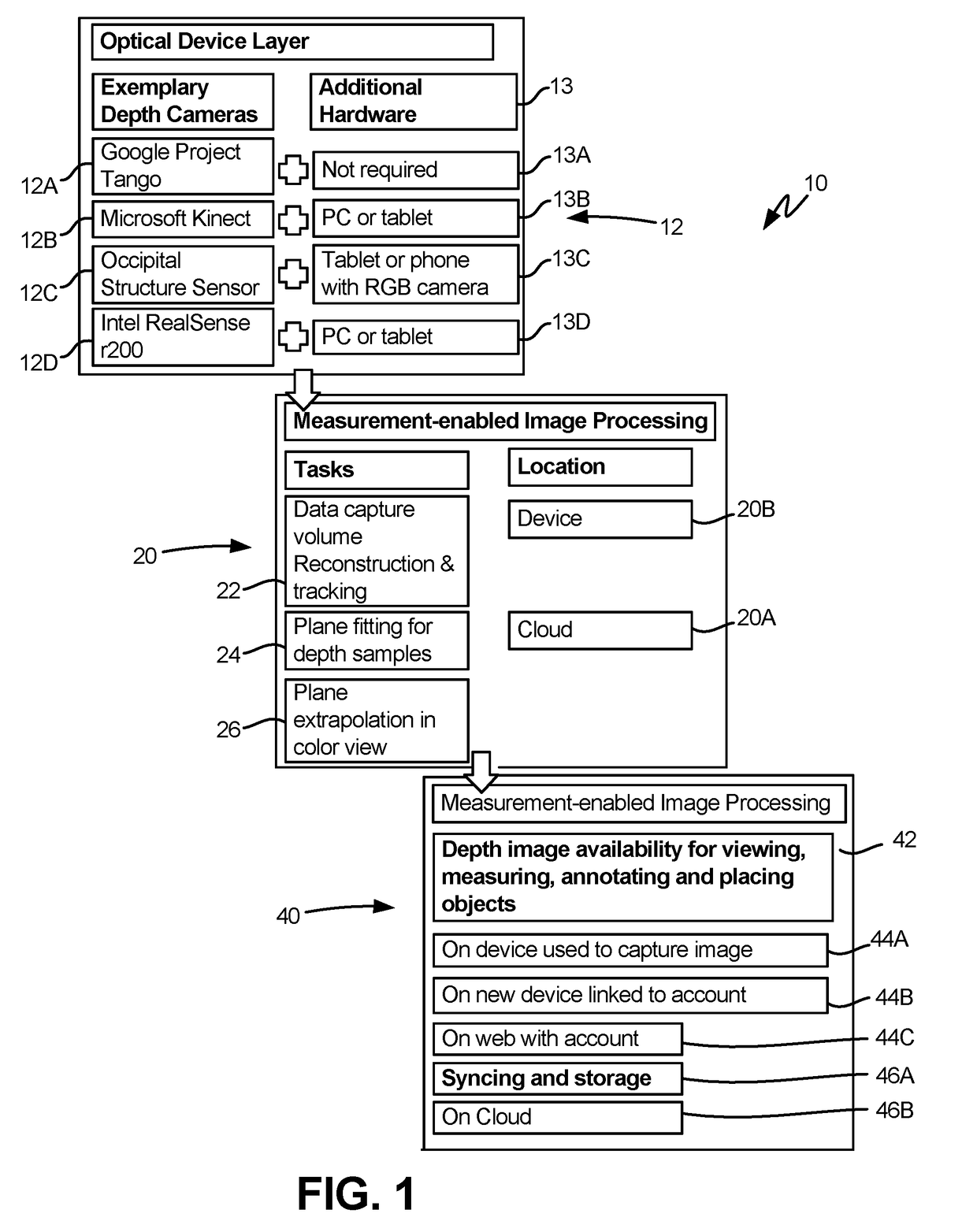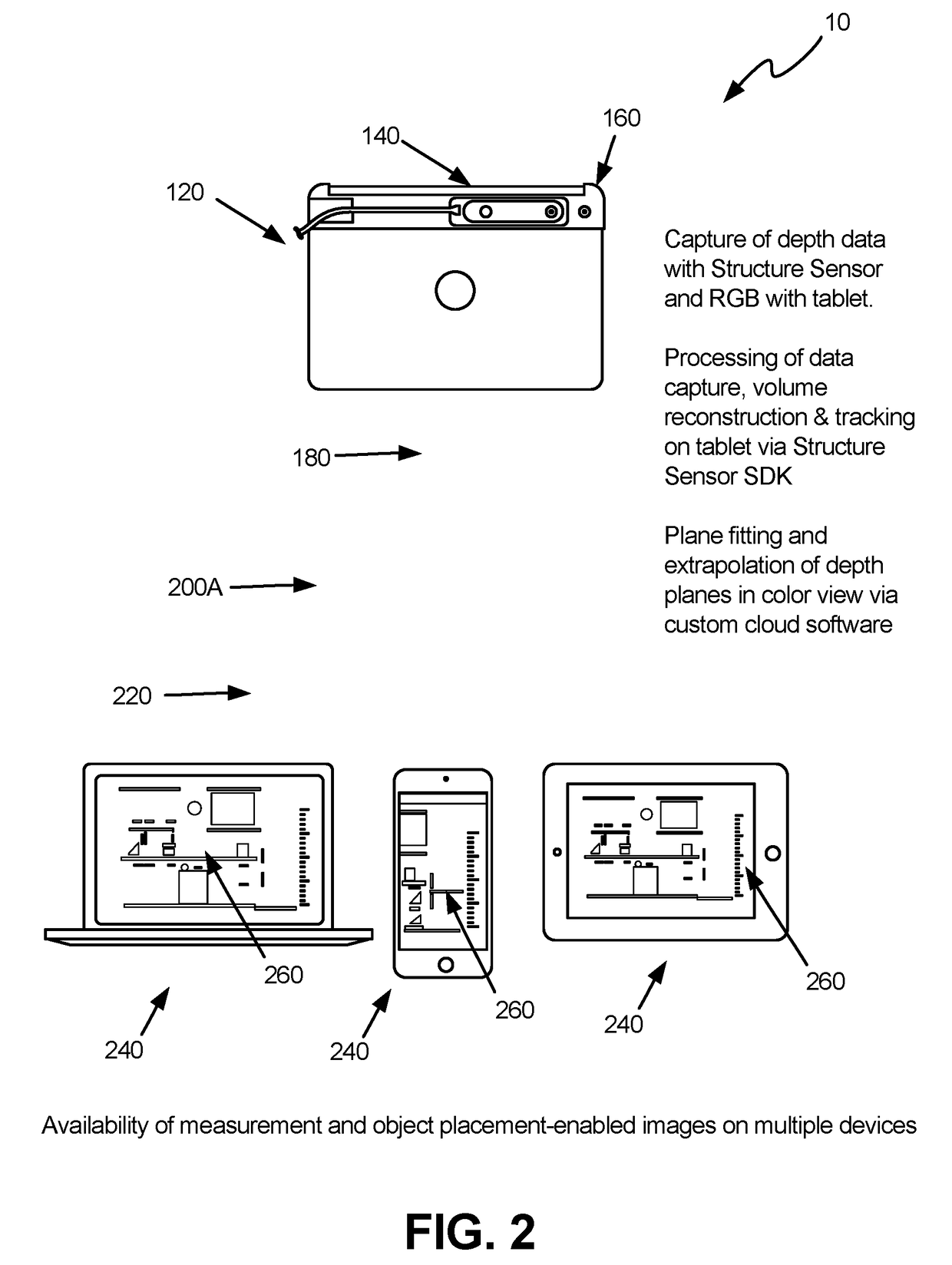Apparatus, Systems and Methods for Ground Plane Extension
a technology of apparatus and systems, applied in electrical apparatus, instruments, measurement devices, etc., can solve the problems of inability to properly image disparities on planes, inability to accurately image areas of prior art, and insufficient accuracy of these prior art rendered spaces for certain applications
- Summary
- Abstract
- Description
- Claims
- Application Information
AI Technical Summary
Benefits of technology
Problems solved by technology
Method used
Image
Examples
Embodiment Construction
[0034]The disclosed devices, systems and methods relate to a vision system 10 capable of extending a plane in a field of view by making use of a combination of depth information and color, or “visual” images to accurately render depth into the plane. As is shown in FIGS. 1-2, the vision system 10 embodiments generally comprise a handheld (or mounted) optical device (box 12 in FIG. 1), a measurement-enabled image processing system, or “processing system” (box 20), and an application, interaction and storage platform, or “application” (box 40). In various embodiments, these aspects can be distributed across one or more physical locations, such as on a tablet, cellular phone, cloud server, desktop or laptop computer and the like. Optionally, the processing device, by executing the logic or algorithm, may be further configured to perform additional operations. While several embodiments are described in detail herein, further embodiments and configurations are possible.
[0035]FIGS. 1-10 d...
PUM
 Login to View More
Login to View More Abstract
Description
Claims
Application Information
 Login to View More
Login to View More - R&D
- Intellectual Property
- Life Sciences
- Materials
- Tech Scout
- Unparalleled Data Quality
- Higher Quality Content
- 60% Fewer Hallucinations
Browse by: Latest US Patents, China's latest patents, Technical Efficacy Thesaurus, Application Domain, Technology Topic, Popular Technical Reports.
© 2025 PatSnap. All rights reserved.Legal|Privacy policy|Modern Slavery Act Transparency Statement|Sitemap|About US| Contact US: help@patsnap.com



